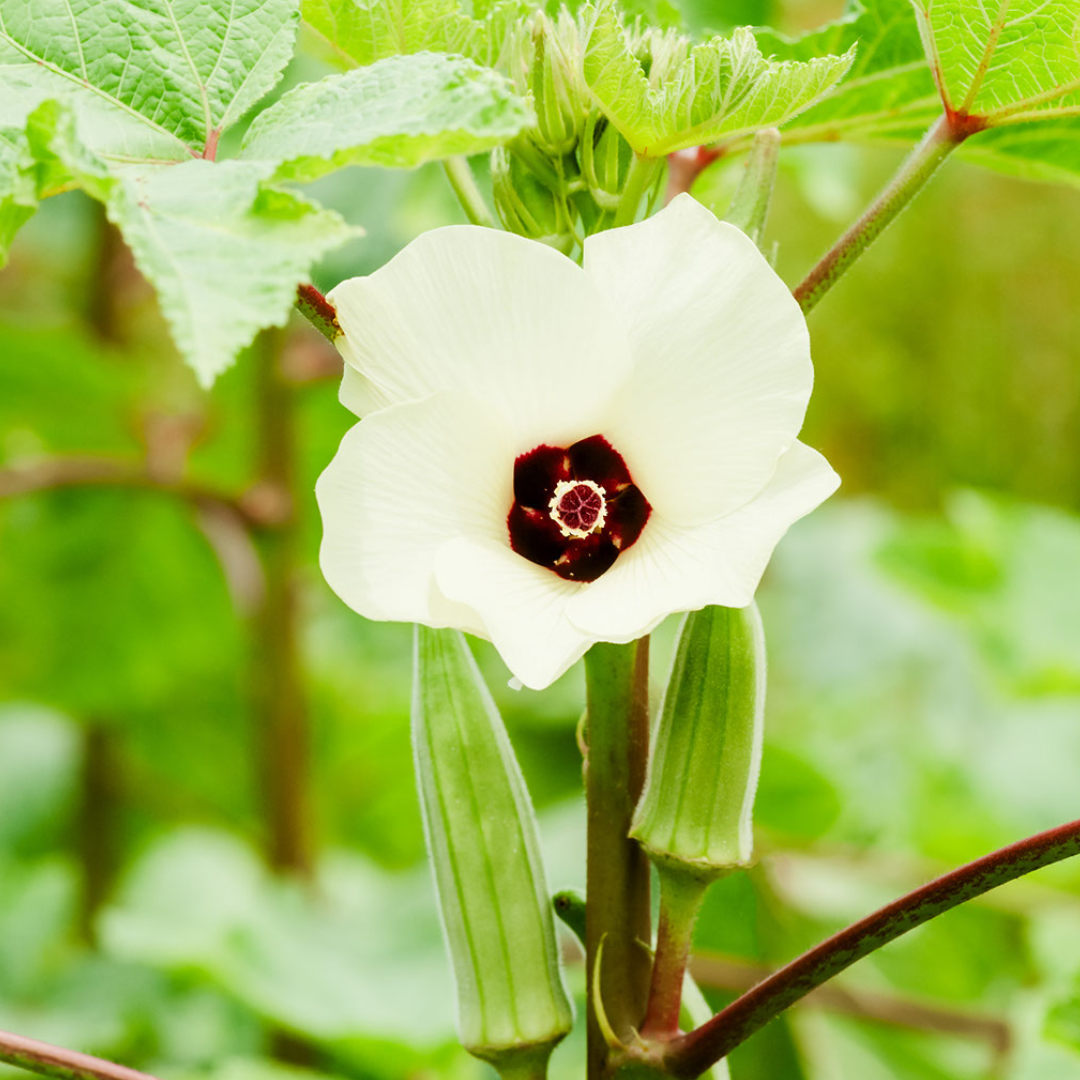Highlighted Crop: Okra!
Okra, also known as lady fingers, tends to be either loved or hated. Growing it in a garden does not give you the same experience as actually eating it. It can be fibrous, tender, or some will describe it as slimy depending on many factors. I had the pleasure of meeting James Beard Award Winner Chris Smith, the author of What the Okra, over the winter and was thoroughly intrigued by his knowledge of and experience with okra.
About Okra
The origin of okra is still up for debate. It’s believed to be from West Africa, South Asia, or Ethiopia. As a perennial, it can grow over six feet tall and is related to species such as cotton, cocoa and hibiscus. It’s one of the most heat- and drought-tolerant crops I know of. The fruit is a capsule of cross sections that contain round, white seeds, the leaves can range from 4 to 8 inches in diameter, and it gets white to yellow flowers with a red or purple spot at the base of each petal. They are absolutely stunning!
Using Okra
There are plenty of recipes that you can follow that use the okra pods as an ingredient. But did you know that you can eat the young leaves of some varieties? Or that the seeds can be ground and used as a coffee substitute? As a matter of fact, the entire plant is edible!
Far from the familiar ways okra is served in homes and restaurants, there are many non-conventional ways that people prepare it. People around the world pickle, dry and roast okra. Some use the pod as a thickener by drying and then grinding the okra into a powder similar to cornstarch.
If you’ve ever let an okra pod grow to maturity and then tried to cook it, you’ve likely found that it can be very fibrous and hard to digest. It can, instead, be used to crotchet clothes and make paper. Because some varieties have hollow stems, they’re even used as straws!
Food is a necessity for life, and exploring different ways to add food into your diet can add both nutrients and excitement. Okra is a great place to start.


